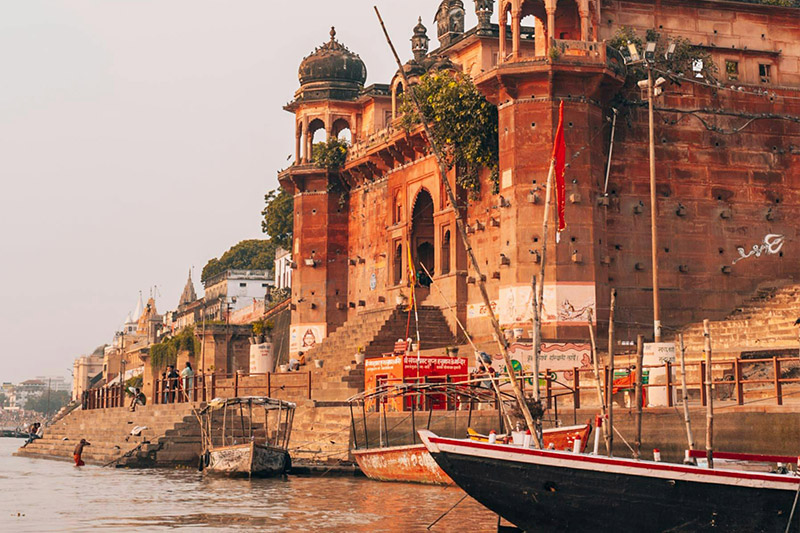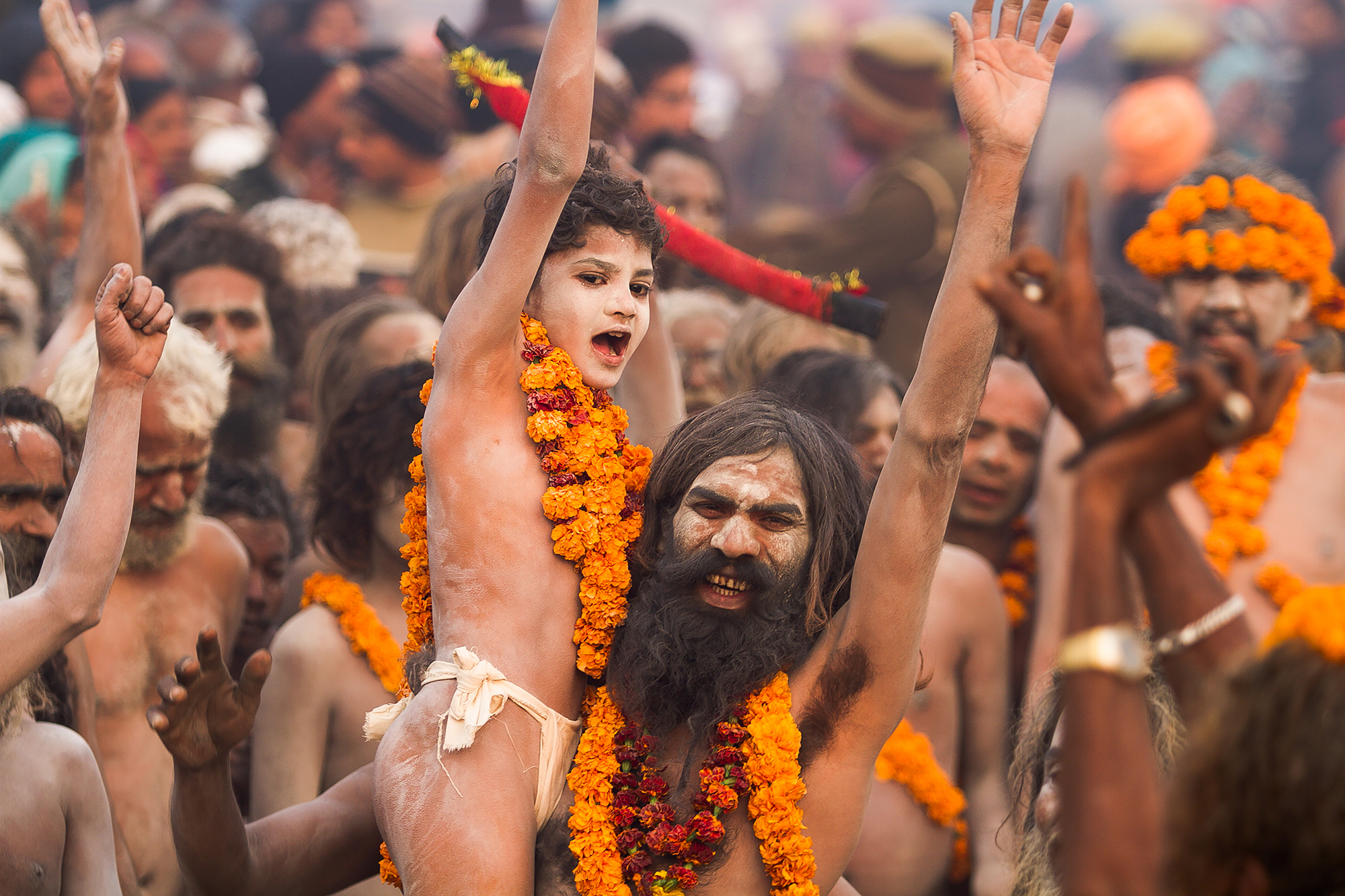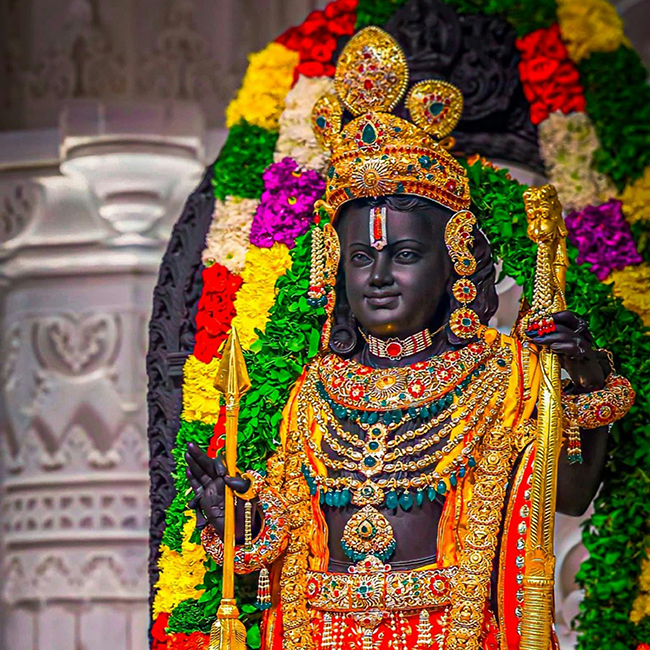

Varanasi: The Spiritual Tapestry of India's Sacred City


20 Feb 2024
The Sacred City of Varanasi, India's Spiritual Tapestry
Nestled along the banks of the Ganga River, Varanasi, also known as Kashi or Banaras, stands as one of the oldest continuously inhabited cities in the world. Steeped in history, culture, and mysticism, Varanasi is a tapestry woven with threads of spirituality that have captivated seekers and pilgrims for centuries. In this sacred city, the divine dance of life and death unfolds against a backdrop of ancient ghats, temples, and narrow alleys, creating an enchanting and profound ambience.
River Ganga - The Sacred Lifeline:
At the heart of Varanasi lies the Ganga, a river revered as the holiest in Hinduism. For centuries, pilgrims have flocked to its ghats, steps leading down to the water, to perform rituals, ceremonies, and cremations. Ganga is not merely a geographical entity but a spiritual lifeline, believed to cleanse sins and grant moksha (liberation) to those who immerse themselves in its sacred waters.
Ghats of Kashi:
Kashi's ghats serve as the city's soul, each pulsating with a unique energy and purpose. Dashashwamedh Ghat, with its grand aarti ceremonies, attracts pilgrims and tourists alike. At the confluence of the Ganga and Assi River, Assi Ghat is a quiet haven for meditation and introspection. The ghats become a canvas for the spiritual stories of the city, a place where seekers connect with the divine through prayer, ritual, and contemplation. The Manikarnika Ghat is the burning Ghat of Kashi, where cremations occur at any time. This Ghats of Varanasi brings forth the ultimate reality, death, right in front of us, a reality one is afraid yet cannot escape. The Manikarnika Kund is a water tank nearby; the name Manikarnika comes from the earring of Mata Sati that fell here when Vishnu, with his Sudarshan Chakra, dispersed her body from angry Shiva's hands to drop on earth and form the 51 Shaktipeeth. Mani stands for pearl or earring, and Karn is ear in Sanskrit, thus Manikarnika.
Temples of Kashi:
Kashi boasts a myriad of temples dedicated to various deities. The Kashi Vishwanath Temple, dedicated to Lord Shiva, is a revered pilgrimage site. Sankat Mochan Hanuman Temple, dedicated to Lord Hanuman, is believed to have healing powers. The city is dotted with countless smaller shrines, each contributing to the spiritual mosaic of the spiritual city.
Spirituality in Daily Life:
What sets Varanasi apart is the seamless integration of spirituality into everyday life. The city resonates with a spiritual rhythm, from the early morning prayers echoing through the narrow alleys to the evening chants on the ghats. The omnipresent sound of temple bells, the fragrance of incense, and the sight of saffron-clad sadhus create a tranquil and transcendent atmosphere. Spirituality is a beautiful intertwining of religious teachings that one can apply to improve one's day-to-day life. Yoga, meditation, balanced meals, righteousness, respecting humanity, and more all form part of the spirituality that can be witnessed in Varanasi.
Festivals and Celebrations:
Varanasi comes alive during festivals like Diwali, Holi, and Shivaratri when the city becomes a kaleidoscope of colours, lights, and devotional fervour. The energy of the festivals amplifies the spiritual aura, attracting pilgrims from across the globe who seek to be part of these vibrant celebrations.
In conclusion, with its timeless spirituality, Varanasi beckons those searching for a deeper connection with the divine. It is a city where the material and the metaphysical coexist harmoniously, the Ganga flows as a sacred artery, and the ghats resonate with the echoes of ancient chants. Varanasi stands not just as a city on the map but as a spiritual beacon, inviting all who venture within its mystical embrace to partake in the eternal dance of life and transcendence.
Leave a Reply
Explore by Categories
Most Viewed Blogs
Tags
Location
State
















.jpg)


